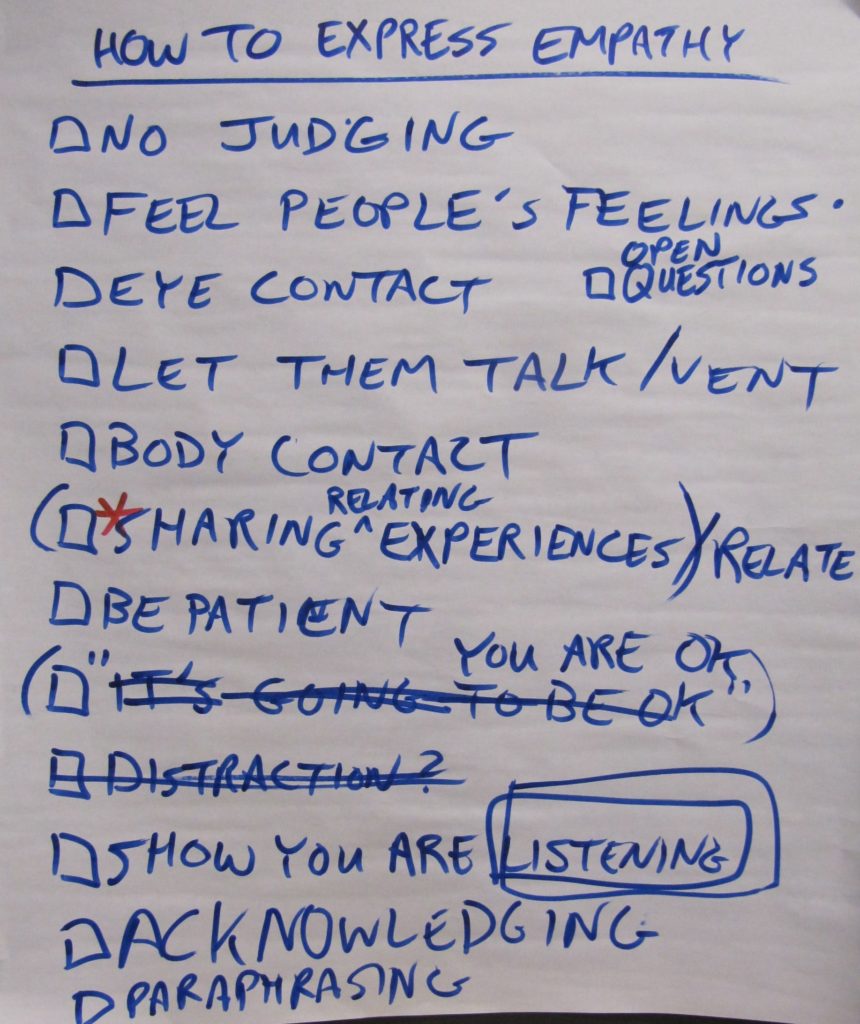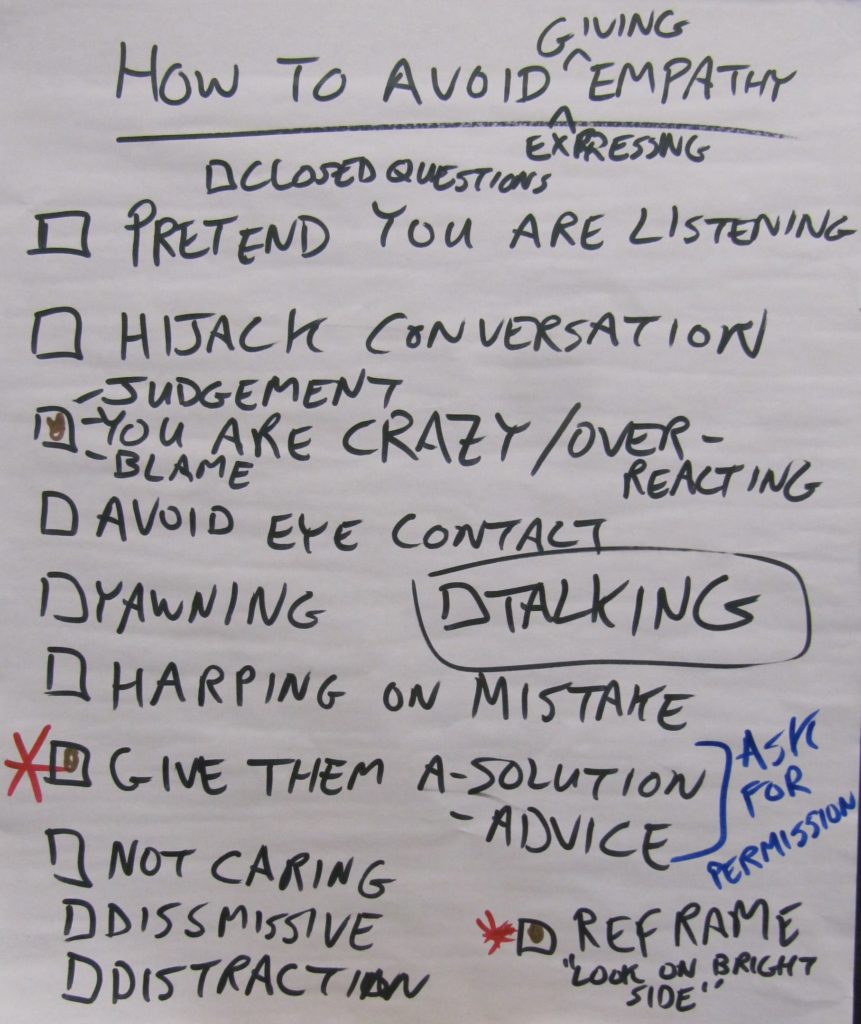This past Fall I delivered a training module on Empathy as part of a day long communication and teamwork training. In this post, I will give you step by step instructions on running an empathy workshop as well as share some interesting results from my session. Please see How to Express Empathy – Avoid the Traps! for my understanding empathy.
Let’s start with the workshop results.
How to Express Empathy

Comments:
- Sharing or relating experiences. DANGER! DANGER! It is easy to use this to avoid expressing empathy – see How to Express Empathy – Avoid the Traps!. It is only after you have expressed empathy already that you can share something that shows you understand them. Good: “I can only imagine how difficult this time is for you. I know had great difficult time dealing with the loss of my mother.” Bad: “YeahIt took me a while, but I got over it.” (implies that they need to start recovering and that they need to ‘get over it'”.
- Unless you can tell the future, it is not helpful to say “It’s going to be OK.” A better alternative is to say “You are OK” to acknowledge them in that moment. This is to validate them as human beings – “Yes, I hear and understand that you did that and you are OK as a person. It could happen to anyone.”
How to AVOID Expressing Empathy

Comments:
- We actually had a good laugh while people recounted these. I imagine this was because we all had committed these acts at various times.
- Offering a solution or advice without permission can be considered a form of violence. The easy fix is to ASK for permission to provide advice or a solution. e.g. “Hey, do you just want me to listen or are you soliciting advice?” or “May I offer you a suggestion?”
Conclusions
We all have the basic understanding of what empathy is and what it is not. It turns out that traps and our attention are the key limiting factors in empathy practice.
Workshop Format
- Opening. Ask people to describe what empathy is. The goal is to get everyone oriented around a working understanding, not a crisp definition. Optional: ask or brainstorm why empathy is useful.
- Break into small groups to list behaviours on a) How to express empathy, b) How to AVOID expressing empathy. Let the groups go until it looks like they are running out of ideas.
- Large group sharing. Write each question on a flip chart. Have people shout out answers. Give time for large group discussion of items.
- Test items for group support. We used decider protocol for seeing if there was consensus around items to see if everyone agreed that they were correct. This allowed the group to come up with their own operational definition of empathy.
- Discussion of tricky items such as sharing or relating experiences.
- Practice giving and receiving empathy by forming pairs and taking turns telling stories.
Acknowledgements
I would like to thank the participants of the WEAO new professionals organization who created the content shown in the photos. I would also like to thank Andrea Tomasini for organizing the train the trainers event at the Atlanta Scrum Gathering that allowed me to develop this workshop.


